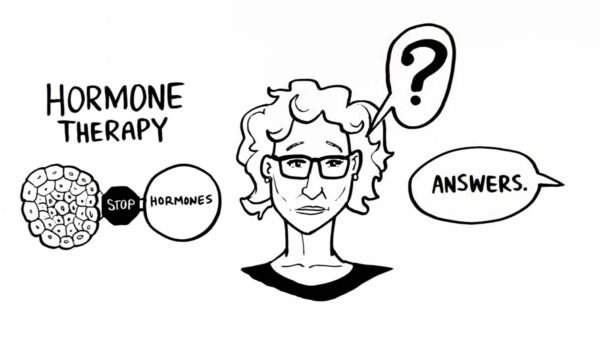Transient synovitis, also known as toxic synovitis, is a common condition that affects children, generally between the ages of 3 and 10. It is characterized by temporary inflammation of the hip joint, lead pain and a limp. While transient synovitis is offen self-limiting and not a cause for long-term concern, understanding its symptoms, causes and treatments is very helpful for parents.
In this article, we will explore everything you need to know about transient synovitis, including its symptoms, diagnosis, treatment options and preventive measures. If you’re seeking accurate and comprehensive information on this condition, you are right place.
What is Transient Synovitis?
Transient synovitis is a temporary inflammatory condition of the hip joint. This inflammation cause to swelling and pain leading to difficulty in walking or standing. Unlike more serious conditions like septic arthritis or juvenile idiopathic arthritis, transient synovitis doesn’t result in permanent joint damage and resolves within a few weeks.
Causes of Transient Synovitis
Exact cause of transient synovitis is not fully discovered.But some factors are associated with it. Here are:
- Viral Infections: Many children diagnosed with transient synovitis have recently experienced an upper respiratory tract infection, like as common cold or flu.
- Trauma or Overuse: Minor injuries or overuse of the hip joint may contribute to the development of transient synovitis.
- Immune Response: An overactive immune response to a viral infection or trauma could trigger inflammation in the hip joint.
Symptoms of Transient Synovitis
Realize the symptoms of transient synovitis is very helpful for timely diagnosis and management. Here are common symptoms:
- Hip Pain: Pain is usually localized to one hip but may radiate to the thigh or knee.
- Limping: Noticeable limp is often the first sign that prompts parents to get help.
- Limited Range of Motion: Affected child may have difficulty moving the hip joint.
- Low-Grade Fever: Mild fever could be seen.
- Reluctance to Bear Weight: Children may avoid putting weight on the affected leg due to discomfort.


Diagnosing Transient Synovitis
Right diagnosis of transient synovitis is vital to differentiate it from more serious conditions. A doctor will typically monitor the following issues:
- Medical History and Physical Examination: Doctor will ask about recent illnesses and assess the child’s range of motion and pain levels.
- Imaging Studies: X-rays or ultrasound may be used to rule out fractures or other joint abnormalities.
- Blood Tests: Blood tests can help exclude infections or other inflammatory conditions.
Treatment of Transient Synovitis
Primary aim of treatment is to relieve pain and allow the inflammation to subside. Here are the treatment options of Transient Synovitis:
- Rest: Limiting physical activity is essential for reducing stress on the hip joint.
- Pain Relief: Over-the-counter medications like ibuprofen or acetaminophen can help alleviate pain and reduce inflammation.
- Hydration: Be sure that child stays well-hydrated can support overall recovery.
- Follow-Up Care: Regular follow-up appointments may be necessary to monitor progress and complete resolution of symptoms.
How Long Does It Take for Hip Synovitis to Heal?
Most cases of hip synovitis resolve within 7 to 14 days with proper rest and care. In some cases, symptoms may take up to 3 to 4 weeks to completely subside. If symptoms persist beyond this period or worsen, it is recommended to consult a hospital.
Real-Life Example of Transient Synovitis
A patient 6-year-old boy, who developed a limp after recovering from a cold. His parents noticed he was reluctant to walk and frequently complained of pain in his hip. After a visit to the pediatrician and an ultrasound, he was diagnosed with transient synovitis. With rest, hydration and over the counter pain relief, he fully recovered within two weeks and go back daily life. This case show us the importance of early recognition and proper care.
FAQs About Transient Synovitis
- Is transient synovitis contagious? No, transient synovitis is not contagious. It is usually linked to viral infections or minor joint trauma.
- Can my child play sports after recovery? Yes, most children can return to their usual activities, including sports, once fully recovered and pain-free.
- What’s the difference between transient synovitis and septic arthritis? Septic arthritis is a severe infection of the joint requiring urgent medical treatment, while transient synovitis is a temporary inflammation that resolves on its own.
- Does transient synovitis recur? Recurrence is uncommon but may be seen, especially if the child has another viral infection or joint strain.


Statistics on Transient Synovitis
Understanding the prevalence and outcomes of transient synovitis can provide valuable insights for parents and doctors. Here are some key statistics:
- Prevalence: Transient synovitis is the most common cause of hip pain in children, affecting about 3 in 1,000 children annually.
- Age Group: This condition predominantly could be seen in children aged 3 to 10 years, with boys being slightly more affected than girls (male-to-female ratio of about 2:1).
- Recovery Rates: Over 95% of children recover completely within two weeks without any complications. In rare cases, symptoms may persist longer but still resolve with appropriate care.
- Seasonal Trends: Studies suggest a higher rates of transient synovitis during the fall and winter months, likely due to the increased prevalence of viral infections during these seasons.
- Hospital Visits: Transient synovitis accounts for about 5% of pediatric orthopedic outpatient visits.
Coping Tips for Parents
Managing transient synovitis can be stressful for parents. Here are some healpful advices:
- Stay Informed: Educate yourself about the condition and its recovery process.
- Provide Comfort: Use pillows and blankets to support the affected hip during rest.
- Encourage Distraction: Engage your child in activities like reading or drawing to take their mind off the pain.
- Follow the Treatment Plan: Be sure your child takes prescribed medications and join follow-up appointments.
- Seek Support: Don’t hesitate to ask doctor or parent support groups for advice.
Preventing Transient Synovitis
While it is not always possible to prevent transient synovitis, some measures can reduce the risk:
- Prompt Treatment of Infections: Addressing viral infections early may lower the likelihood of developing complications like transient synovitis.
- Avoiding Overuse: Encourage children to take breaks during physical activities to prevent joint strain.
- Healthy Lifestyle: Balanced diet and regular exercise could strengthen the immune system and health.
When to Seek Medical Attention
Although transient synovitis is usually harmless, it is helpful to consult a doctor if you realize the below:
- Child’s symptoms persist for more than two weeks.
- Child experiences severe pain or high fever.
- Limp worsens or does not improve.
Last Words About Transient Synovitis
Transient synovitis is a temporary and manageable condition that primarily affects children. With proper care and attention, most cases resolve completely within a few weeks. As a parent, get informed about the symptoms, causes and treatment options can help you provide the best support for your child.
If you found this article helpful, consider sharing it with other parents who may benefit from this information. Remember, early recognition and care are key to ensuring a smooth recovery for your child. For more articles on children’s health and wellness, visit our website and explore our extensive resources.
We wish healthy life to you.

